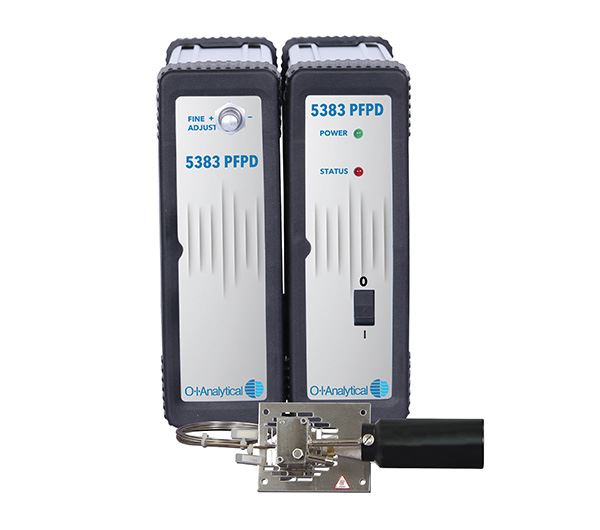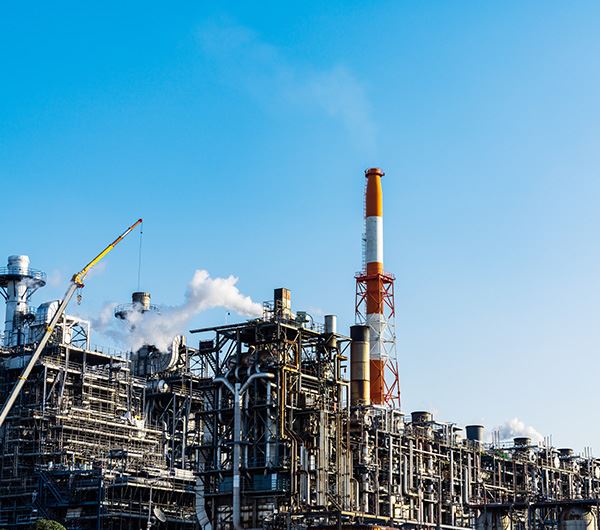Selective success | How the OI Analytical 5383 PFPD Gas Chromatograph Detector is changing the game in petrochemical analysis
Imagine being able to detect a single drop of sulfur in an Olympic-sized swimming pool filled with oil. Sounds impossible, right? The OI Analytical 5383 Pulsed Flame Photometric Detector (PFPD) is making waves in the petrochemical industry by doing just that–and more. Let's dive into how this game-changing technology is revolutionizing the way we analyze sulfur in petrochemicals.

A petrochemical puzzle

For years, petrochemical analysts have been grappling with a tricky problem: how to accurately detect and measure tiny amounts of sulfur amidst the plethora of hydrocarbons. Refineries need to check for sulfur contamination because it can cause their equipment to corrode, contaminate refinery catalysts, and even cause environmental damage.
Traditional gas chromatographic detectors often fall short, struggling with sensitivity and interfering compounds. Working with these detectors for sulfur analysis is similar to attempting to hear a whisper at a rock concert–it is nearly impossible to pick out the signal from the noise.

Enter the superhero
This is where our hero, the 5383 Pulsed Flame Photometric Detector (PFPD), swoops in to save the day.
The 5383 PFPD uses incredibly precise timing to complete this challenging task. By operating via pulsed-flame and measuring the light emitted at just the right moment, it can selectively detect sulfur compounds with incredible accuracy. It's so sensitive that it can detect sulfur at levels as low as parts per billion. This innovation improves sensitivity by 10x over classical FPD, flame pulsed detector.
This detector is also incredibly versatile due to its hydrocarbon selectivity. It can measure sulfur >106 S/C, whether you're looking at trace sulfur in ultra-low sulfur diesel or higher levels in unprocessed crude oil, this detector has got you covered.
Real-world impact on refineries
The impact of the 5383 PFPD is being felt across the petrochemical industry. Refineries are using it to monitor and optimize their desulfurization processes, ensuring they're producing cleaner fuels that meet strict environmental regulations. Natural gas companies are relying on it to precisely measure odorants which are added to help detect gas leaks and keep us all safe. Sulfur also damages catalyst beds at refineries, costing more time and money to remove it and repair damaged systems.

Looking forward
As we move towards a future of cleaner fuels and more efficient processes, tools like the OI Analytical 5383 PFPD will play an increasingly crucial role. This device is a window into the molecular world of petrochemicals, offering insights that can drive innovation and improvement across the industry.
So, the next time you fill up your car or use a plastic product, spare a thought for the unsung heroes in the lab. Armed with cutting-edge technology like the 5383 PFPD, they're working tirelessly to make our fuels cleaner, our products better, and our world a little bit safer.
The future of petrochemical analysis is here, and it's looking brighter than ever with the PFPD.
Sources:
- Wang, X., & Stout, S. A. (2016). Oil spill environmental forensics: fingerprinting and source identification. Butterworth-Heinemann.
- Andersson, J. T. (2015). Reliability of sulfur-specific detection in the context of fuel analysis. Energy & Fuels, 29(4), 2211-2222.
- Song, C. (2003). An overview of new approaches to deep desulfurization for ultra-clean gasoline, diesel fuel and jet fuel. Catalysis today, 86(1-4), 211-263.
- OI Analytical. (2023). Model 5383 Pulsed Flame Photometric Detector (PFPD) [Product Brochure]. Retrieved from ysi.com/pfpd
- Rodgers, R. P., & McKenna, A. M. (2011). Petroleum analysis. Analytical chemistry, 83(12), 4665-4687.